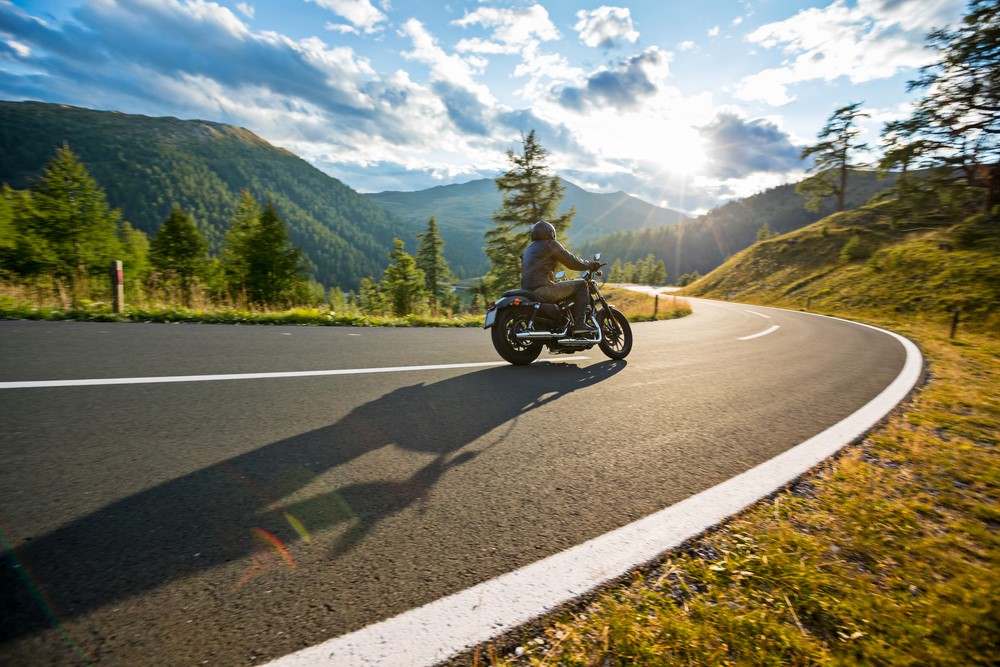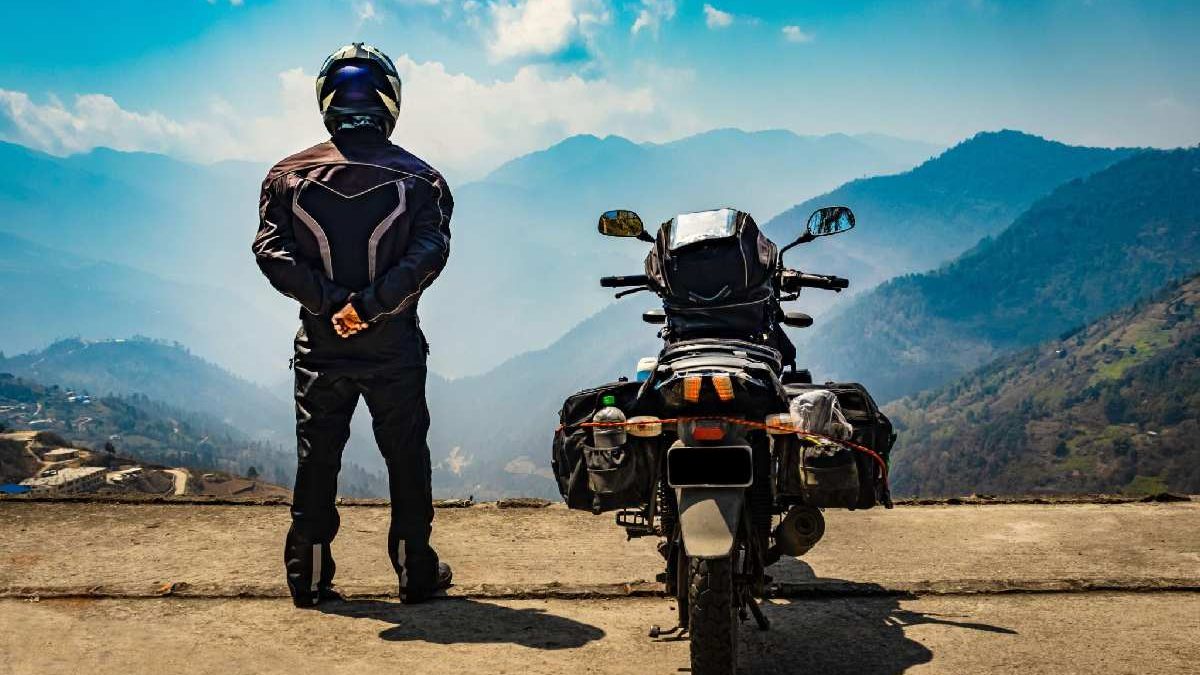Long Motorcycle Rides – Fatigue can be a real concern for anyone who loves to ride a motorcycle. Driving a motorcycle is more physically and mentally draining than driving a car — mainly because you are exposing your body to the elements. The wind and extreme temperatures can leave you exhausted after a long ride. Sitting for extended periods can also take a toll on your body, especially when you have to grip the bike with both legs. There’s also the mental chore of having to dodge traffic. For most riders, fatigue tends to set in after about three days of riding, regardless of their experience level. From staying connected with motorcycle helmet communication to taking breaks, if you want to enjoy a long road trip, use these tips to reduce fatigue on a motorcycle.

-
Table of Contents
Dress for the Occasion
Wearing the right clothes is one of the best things you can do to prepare for a long trip. The temperature will drop several degrees or more when you’re driving at 60 mph, so consider wearing another layer to keep warm. Overdressing will make you hot, which can leave you dehydrated. Sweating is natural, so wear a moisture-wicking layer made of wool or synthetic materials to stay dry behind the wheel.
Do your best to cover every part of your skin to block the wind so the trip won’t be as hard on your body. All that resistance can leave you exhausted after a few hours. Your clothing should fit without cutting off your circulation or range of motion. Bring a pack of spare clothes so you can add/remove layers as needed.
-
Improve the Ergonomics of Your Motorcycle
Riding a motorcycle can be painful if you aren’t seated in the right position. It’s important to ensure you aren’t leaning too far over or using your arms to support yourself, or you will get tired after a few hours. Adjust the height of your seat, pegs and handlebars to change your stance when riding. You should be able to sit with your back straight and your shoulders directly above your hips. Your arms should be extended when touching the handlebars with your elbows slightly bent. Focus on using your core to maintain balance on the bike instead of hunching your back and leaning against the handlebars.
You should be positioned to handle everything that comes your way with a clear view of your surroundings. Your safety gear shouldn’t interfere with your range of motion or press against your neck, head or face. If you need to talk to your companions, use wireless helmet communication to have a conversation hands-free so you don’t have to rely on turn signals.
Need to check the map or want to listen to music on the road? Mount your phone or GPS on the handlebars to keep it in view so you don’t have to keep looking down at your device. Find a wireless helmet headset with quality JBL speakers to enjoy music, podcasts or audiobooks during the trip.

-
Practice Self-Care
It is a sign that your body needs rest. Sometimes, the best way to deal with the problem is to take a break from riding so your body can relax. The road is long, and you have places to be, but not stopping can put your health at risk. You will lose the ability to make decisions on a dime, so be sure to stay alert on long trips. Experts recommend resting once every two hours when riding continuously. If you need to stop to go to the bathroom, stretch at least 15 minutes every time you get off the road. You will feel much less sore the next day so you can power through the rest of your trip.
-
Stay Hydrated
Your body also needs a steady supply of water to keep riding. Start drinking water in the hours before you depart and take a few swigs every time you stop to keep your fluids up, especially if you are sweating more than usual. If there aren’t a lot of places to stop, consider wearing a hydration vest with a built-in straw so you can take a sip without taking your hands off the handlebars.
-
Drive Safely
Nothing will ruin your trip like reckless driving. Research shows that rider fatigue tends to be a result of both physical and mental exhaustion. Navigating traffic increases anxiety, which can lead to fatigue. The safer you drive, the less you have to worry about getting into an accident. Obey the speed limit and avoid driving in dangerous conditions. Safe driving also means learning to expect the worst from others. Road rage is an issue across the U.S. Watch out for reckless drivers and blind spots that can put you at risk.

Driving a motorcycle can be tiring, but you can use these tips to minimize the effect it has on your body if you want to go the extra distance. You should never ignore your health when riding. If you feel fatigued, be responsible and pull off to the side of the road until you are ready for more.


